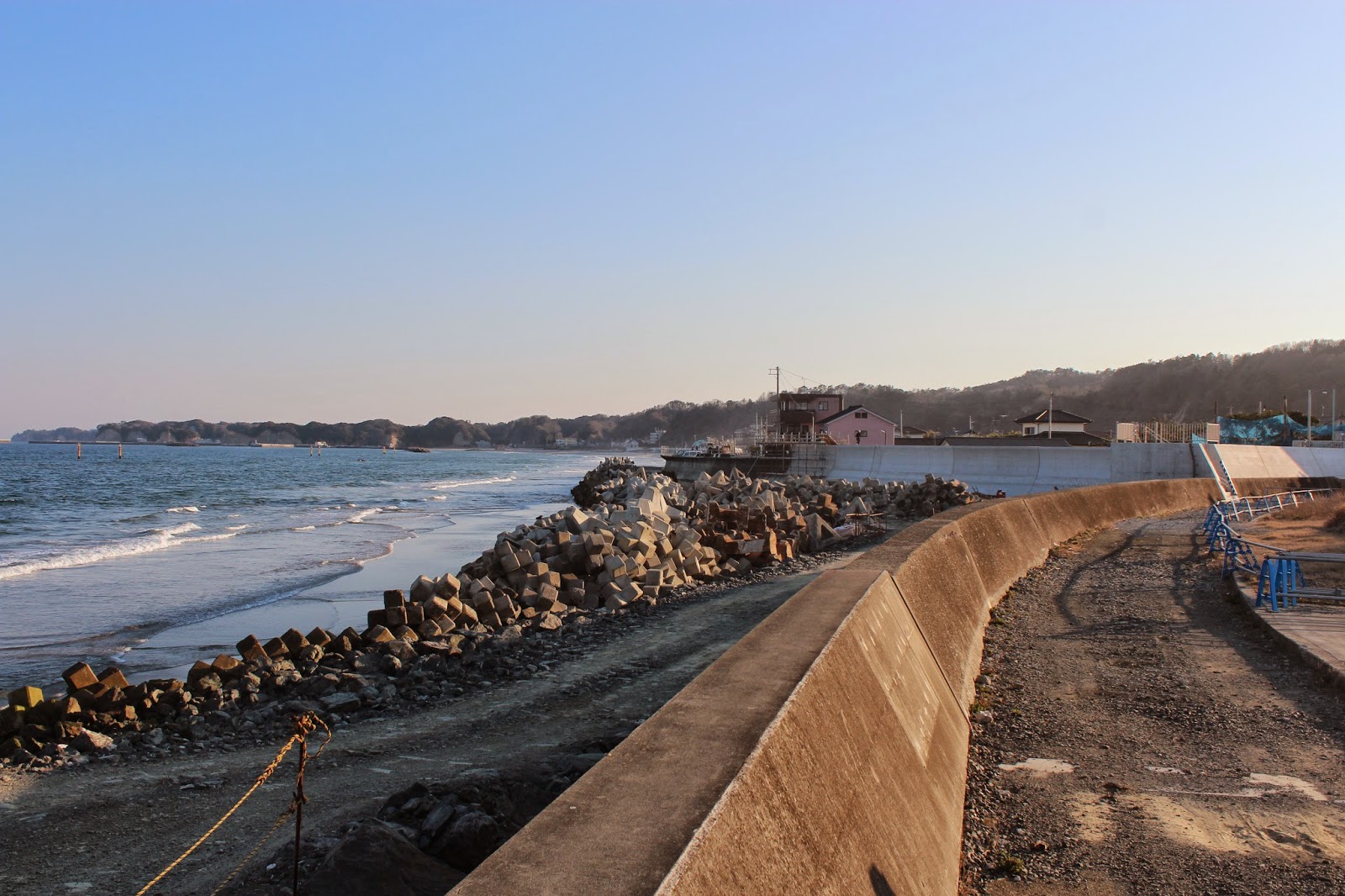It all seems logical to build the great long wall of embankment along the coast of the Tohoku area, the three prefectures (Iwate, Miyagi and Fukushima) facing the Pacific Ocean to protect them from any potential tsunamis in the future. As we visited the village after village along the coast, all we could see was construction after construction.
(To compare the changes below - check
this post I wrote on August 31, 2012 in the same place).
 |
| the black line on the bottom is the old seawall, and the white one is the addition |
Perhaps children may feel safer playing outside when the wall is so high that they do not see the ocean. However, Japanese life depends so much on fish and the impact of the Fukushima nuclear disaster on Fukushima's fishery and on the lives of fishermen has not yet been brought into the spotlight yet because the radiation on the land - vegetation and agriculture - has been on the forefront of everyone's mind.
When Simmy, our friend from Iwaki who has now moved to Naraha town, first brought us to a fish drying facility, I couldn't believe what I saw with my own eyes: people handling fish less than 20 KM away from the Fukushima Daichi where over 300 tons of radio-contaminated water is leaking to the ground water and to the ocean.
 |
| Employees working with fish from Hokkaido |
 |
| Dried fish products |
Kazawa san lost everything to the tsunami. He had a thriving business of a fish product shop until the day of tsunami. When he felt the shaking, he instinctively knew that a massive tsunami was on the way. He immediately called all of his employees and drove them to the mountain for evacuation without a second thought. Neighbors who hesitated for seconds ended up being swallowed by the giant wave. That day, he thought he lost everything.
 |
| Photos of tsunami-destroyed fish shop on Kazawa san's cell phone |
Some time after he returned to his shop and factory and decided to put behind him his life as a victim. He started volunteering at a local evacuation center. Around the same time, he started receiving young university student volunteers from the neighboring prefecture to help. He had lost his business and could not imagine re-starting his fishing or fish product business in Fukushima. He had nothing to go back to. He thought there was nothing much for these young folks to help with, but he didn't want to disappoint these energetic young students. So he started his fish shop again, but this time he started bringing fish from Hokkaido where the fish industry has not been affected by radiation. He invested over 50 million yen to set up a whole new shop with brand new equipment to start this new business even though he knew it is much harder to recover the fish industry than agriculture in Fukushima. The loss he incurred in one fiscal year is already 8 million yen last year. But because of the young people who wanted to help, because of the new hope rising in him, he couldn't just leave the industry for good.
"After all, I needed a new hope. I wanted to give hope to young people. They wanted to help and they are the next generation of our society. I didn't want them to be disappointed. We were helping one another."
 |
| Recovering the ability to "give hope" is most important after disaster. |
The university students kept coming. Some graduated and moved on with life but new students joined the team. Kazawa san continues to receive these students so their relationship of giving help and receiving hope continues.
 |
| Kazawa san's dried fish shop |














No comments:
Post a Comment